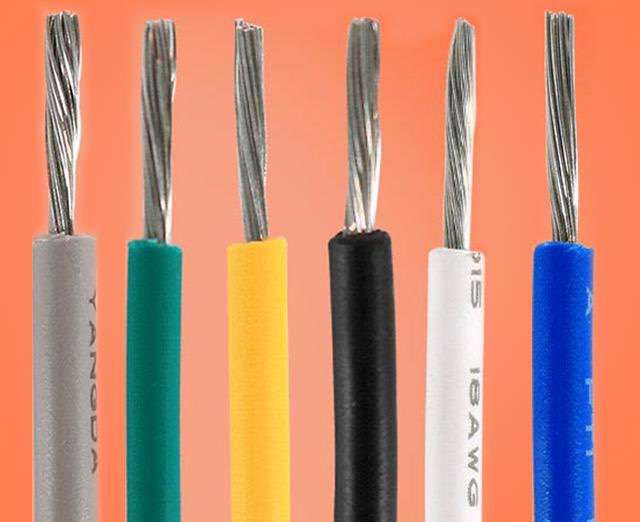Maybe some buyer or purchaser will meet with such a question when they do the detail communication with the electrical engineer before the procurement and this article maybe will help you a lot.
The maximum current the wire can withstand is not calculated, but the result of experiment. The test method is basically to apply pressure to a 1 meter length of wire at 20°C to obtain the safe current value that the length of wire can continue to pass. This number is printed on the nameplate of the product -- it only needs to be tested once for each make and model of wire. So if you are a purchaser and sourcing the cable or wire including 22awg solid core wire, hook up wire 22 awg and 1.5mm single core cable, you just need require your supplier to do the once test, don't need the twice or more.

3 External Factors
But the actual situation of this current is certainly to have a change, let's talk about the 3 factors that will affect the current load of the wire in use.
- Temperature The higher the temperature, the lower the current-carrying capacity of the wire. This is the most common problem, and is the main reason why construction cables need to be thicker than those used by plugins, in particular hook up wire. And in many cases, the environmental temperature is not controllable, ventilation effect, sunshine, cable density, etc., will affect the environmental temperature, and then affect the cable flux.
- Density of cables If cables are laid too closely, the temperature may be too high. When multiple wires are combined, proximity effect and aggregation effect will be formed, so that the charge is concentrated in the local section of the wire, and the allowable current-carrying capacity of the wire is reduced.
- The longer the cable, the lower the load. The ampacity of a 100-meter cable is not of the same order of magnitude as that of a 10,000-meter cable. (Because my fans pay more attention to the home decoration circuit, so I want to say one more sentence here: the above external factors affecting the current-carrying capacity of the wire, mostly for transmission, industrial, commercial electricity, household electricity due to small environmental temperature change, short distance, so do not consider the influence of external factors on the cable.)
3 Internal Factors
The internal factors that affect the current load of the wire: in addition to some external factors that will lead to the reduction of the current load of the cable in a specific environment, can determine the current load of the wire, more important or the internal factors of the wire, mainly decided by the following three points.
- Wire or cable core area is what we often say "wire or cable diameter", such as IEC standard 1.5mm single core cable and American standard 22awg solid core wire belong to the wire and cable core area. It's just emphasized here that what determines the current-carrying capacity is not the cross-sectional area of the entire wire or cable, but the cross-sectional area of the conductor inside the wire or cable. The thicker the wire, the greater the load.
- Material conductivity here depends on the conductor material, such as common used copper wire and aluminum wire 1.5mm single core cable, the copper material conductivity is at least 30% higher than aluminum. And, in a extreme condition, there may be silver thread need on wire or cable. In addition to the material of the conductor, but also to see the purity of the material. Take hook up wire 22 awg copper conductor material as an example, the highest purity of red copper, than the second grade brass conductivity is much higher.
- Insulation layer thermal conductivity insulating layer, in addition to prevent electric shock, there is a function as important as anti-electric shock -- flame retardant. The better the thermal conductivity of the insulating material, the better the flame retardant performance. Therefore, the insulation material used in the wire or cable, from another aspect to determine the current-carrying capacity of the wire. Taking the hook up wire 22 awg as an example, if manufacturer use the recyclable pvc materials, it will decrease the ability to transfer electric.

Hook Up Wire Selection
Single core cable and hook up wire belong to the common used wire and cable. JZD Wire&Cable has contacted with lots of purchaser or buyer in other countries, in particular usually we find that the 22awg solid core wire, hook up wire 22 awg and 1.5mm single core cable are inquired by our customer and for exporting wire and cable with excellent quality, we applied the UL certification and VDE certification and if you are a purchase and in need of hook up wire or other solid core wire, don't hesitate to contact us.
Extension Information
Previous Post: XLPE VS PVC Cable and Fire Rated
Next Post: 1.5 mm², 2.5 mm² How many watts can a wire carry?
 Author: Joey Wan
Author: Joey Wan  December 09,2021
December 09,2021


